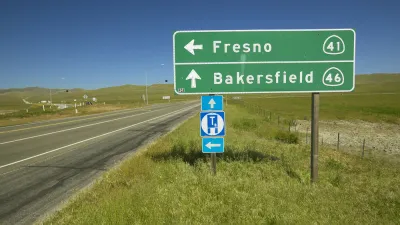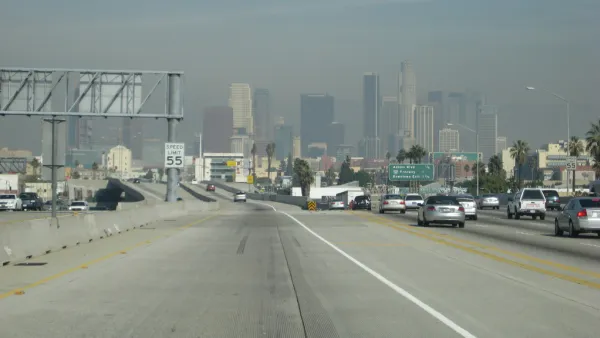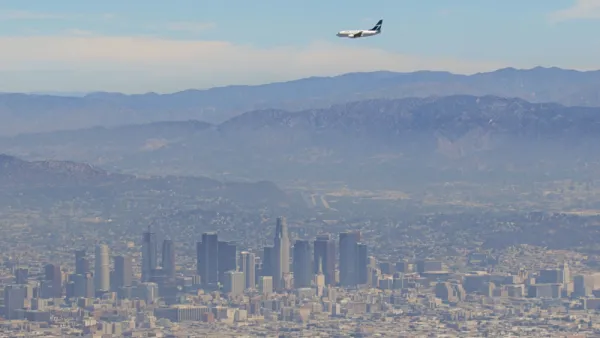Despite better news all around for the quality of the air in America's urban environs, there is still much work to be done, especially for those making the American Lung Association's annual survey of the country's most polluted cities.

First the good news. "The American Lung Association's annual 'State of the Air' report -- based on EPA findings for 2009 through 2011 -- found that the three types of air pollution they track have all declined," reports Les Christie. The report's authors credit the Clean Air Act with helping to "prevent 160,000 deaths in 2010 (the last year data was available); avoid 1.7 million asthma attacks; and reduce hospital admissions and emergency room visits by 86,000 each."
"Still," say the authors, "over 131.8 million people—42 percent of the nation—live where pollution levels are too often dangerous to breathe." And though "California has led the nation in implementing clean-air programs," polluted air remains a challenge throughout the state. "Four cities in the Golden State -- Bakersfield, Fresno, Hanford, and Los Angeles -- are in the top 10 in all three categories of pollution and have been for years," notes Christie. "Bakersfield had the worst air quality for any metro area for the third year in a row."
FULL STORY: America's air is getting cleaner - and less costly

National Parks Layoffs Will Cause Communities to Lose Billions
Thousands of essential park workers were laid off this week, just before the busy spring break season.

Retro-silient?: America’s First “Eco-burb,” The Woodlands Turns 50
A master-planned community north of Houston offers lessons on green infrastructure and resilient design, but falls short of its founder’s lofty affordability and walkability goals.

Delivering for America Plan Will Downgrade Mail Service in at Least 49.5 Percent of Zip Codes
Republican and Democrat lawmakers criticize the plan for its disproportionate negative impact on rural communities.

Test News Post 1
This is a summary

Test News Headline 46
Test for the image on the front page.

Balancing Bombs and Butterflies: How the National Guard Protects a Rare Species
The National Guard at Fort Indiantown Gap uses GIS technology and land management strategies to balance military training with conservation efforts, ensuring the survival of the rare eastern regal fritillary butterfly.
Urban Design for Planners 1: Software Tools
This six-course series explores essential urban design concepts using open source software and equips planners with the tools they need to participate fully in the urban design process.
Planning for Universal Design
Learn the tools for implementing Universal Design in planning regulations.
EMC Planning Group, Inc.
Planetizen
Planetizen
Mpact (formerly Rail~Volution)
Great Falls Development Authority, Inc.
HUDs Office of Policy Development and Research
NYU Wagner Graduate School of Public Service





























